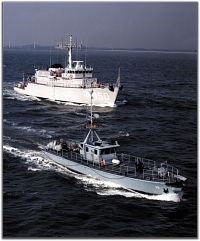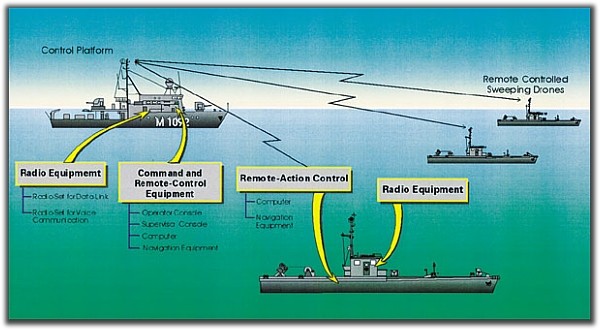Most current efforts focus on converting RHIBs and other small craft into USVs.
How well does USV technology scale? Can a practical, sustainable 100 ton USV be developed? 200 ton? 600 ton?
Would such a thing be useful enough to pursue? Does the technology exist to enable safe, unmanned navigation in congested waters? Are datalinks robust enough? Are modern ship systems reliable enough to make this concept feasible?
How much space/tonnage can be saved by removing the requirement to carry humans? Can seakeeping requirements be relaxed?
The Navy balked at Cebrowski's Streetfighters because they didn't want "disposable" ships, and small ships pose logistics challenges.
Unmanned ships would be far more disposable.
At first glance, developing a system to sustain such vessels at sea would appear to be a big risk.
Obviously USVs wouldn't be viable for certain missions. There are no boarding parties aboard, so they may be limited to sensor nodes in maritime security operations.
How well does USV technology scale? Can a practical, sustainable 100 ton USV be developed? 200 ton? 600 ton?
Would such a thing be useful enough to pursue? Does the technology exist to enable safe, unmanned navigation in congested waters? Are datalinks robust enough? Are modern ship systems reliable enough to make this concept feasible?
How much space/tonnage can be saved by removing the requirement to carry humans? Can seakeeping requirements be relaxed?
The Navy balked at Cebrowski's Streetfighters because they didn't want "disposable" ships, and small ships pose logistics challenges.
Unmanned ships would be far more disposable.
At first glance, developing a system to sustain such vessels at sea would appear to be a big risk.
Obviously USVs wouldn't be viable for certain missions. There are no boarding parties aboard, so they may be limited to sensor nodes in maritime security operations.





Comment